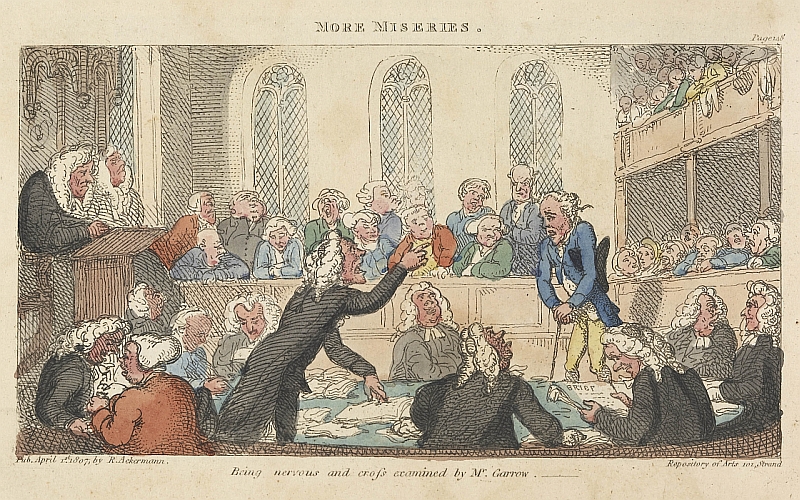
From 1674 to 1913, The Central Criminal Court of England (popularly known as the Old Bailey for the road adjacent) was the major case court for most of England and Wales. Now built on the site of medieval Newgate Prison, it continues to hear major criminal cases.
Before the Great Fire of 1666, the criminal courts were a room off Newgate prison made possible by Sir Richard Whiittington. In 1674, it was rebuilt as an open air (can you imagine in winter?) to prevent diseases…which turned out being wise for when it was reinforced in 1734 and closed off, disease spread quickly. The most notable was an outbreak of typhus in 1750 that killed approximately sixty people include two judges and the Lord Mayor.
Reconstructed in 1774, it remained as one large room until a second court was added in 1824.

Prior to cultural shifts in the early 20th century when crime became perceived as a masculine problem, women accounted for a little less than half to a quarter of the proceedings in Old Bailey, particularly around the late Georgian period. As prostitution was not proscecuted at the Central Court, this was by in large cases of larceny, murder, and other offences concerning childbirth (including infanticide and concealing a birth).
Crime was often seen as a particularly Town problem, not without merit. The first census in 1801 recorded London’s population at one million people, and understanding current difficulties with counting transient or homeless populations, it is not difficult to imagine that this number may have been greater. Most of the influx of people to the capital city (which expanded to 7 million by 1911!) could be attributed to migrant populations looking for work. As industrialization nipped at Regency London’s heels and the agrarian economy slowly wilted into history, the desperation of manys situation would have been compounded and thus forced more folks returning to the city for work.
Prior to this, the masses were the responsibility of parishes and counties. But as disease, pollution, and disorder rose as a response to overcrowding and limited gainful employment, naturally there was a need for a greater rule of law. Unfortunately, it wasn’t until the Victorian era that the Metropolitan Police force came to be.
From the late 1600s until the 1830s, criminals were primarily apprehended by private citizens before being turned over to constables or justices. This gave rise to the occupation of thief-taker, an individual employed by a victim to apprehend suspects. Many thief-takers eventually became Bow Street Runners, appoiteed by Henry and John Fielding after 1748. There were also night watch men, often managed by the local parish (for more info on this, read Before the Bobbies)

Many of these characters are featured in hist-ro, often called in when an author depicts a crime. But although the 1792 Middlesex Justices Act created seven polices offices in London (including the Thames Police Office to patrol the docks), it is hard to imagine that in reality this even scraped the surface of crime in a city of more than a million.
For a more detailed account of the architectural history of Old Bailey, visit here.
For more information on gender and crime at Old Bailey, visit here.
To read criminal proceedings, go here.











Pingback: 2010 in review « Regency Reader